What is an IT Project?
From ideas and boardrooms to your computer: everything you need to know about IT projects at Oxford
Whatever your role here at Oxford, the chances are that you benefit every day from the results of at least one IT project. You might be:
- An academic who can upload lecture notes for a teaching session
- A student who can access lecture recordings after the event at a time of your choosing
- A researcher who can use Electronic Lab Notebooks to record your research notes electronically
- A team who can collaborate away from the office using Teams
- A member of staff who can access your pay slip and P60 online (and doesn’t have to worry about losing it!)
Each year, the Programme and Project Delivery Group (PPDG) in IT Services has an average of around 60 IT projects in progress, each designed to improve some aspect of life here at Oxford. But how do we know what projects we should be working on? Who decides what’s needed, and what difference do projects make to our staff and students?
And what exactly is a project? A standard textbook-style answer would be something along the lines of 'a temporary initiative to deliver a specific objective'. In our IT world, projects either deliver new services or enhance existing ones. We spoke with Ian Wild, Head of the PPDG, who we hope will make this all a little less abstract!
Ian, would you like to introduce yourself?

I’m Ian Wild and for the last eight years I’ve headed up the Programme and Project Delivery Group in IT Services. I’ve been involved in project delivery pretty much all my working life, initially as a team member, then project manager, programme manager, and now delivery group head.
Since I first set foot in what would now be called an IT department in the mid-80s, technology has advanced enormously, as has the discipline of project management.
What is it about project work that excites or interests you?
I think it’s that every project or programme is different and brings with it fresh challenges and often means working with different groups of people each time. From each one there are always things to learn - some things that have worked well that you want to use again and some things for sure that are filed in my drawer marked "never again"! And, most of all, there is a feeling of satisfaction of having played a part in a change that will make a real improvement in supporting the work of the University.
What types of IT project are there?
There are various ways of classifying projects. One way of looking at it is as a spectrum: at one end pure technology projects, such as a data storage system replacement which will be invisible to most people, and at the other end projects that are very user focused, such as the new Teaching Management System (TMS) which produces tangible and visible benefits for undergraduates and their tutors.
Another way of looking at it is that sometimes we need to build a system ourselves because there is no commercial solution available - TMS is a good example again here - and in other instances we are using a commercial software system to support our processes, like Oracle for finance.
How does an IT project start?
The start point is to capture the idea for change in a short document known as a Project Request. This is a very brief outline of what is envisaged and why it is needed. After that a short scoping phase is carried out to flesh out the idea to an Initial Business Case, which is then followed by a more detailed planning and definition phase to give a Full Business Case, and then delivery and implementation follow. At each stage along the way, the business case is reassessed in light of the additional information gathered. If at any point the business case no longer stacks up - in other words if it becomes clear that a project will not meet an identified need effectively and efficiently - the project should not continue.
Who decides whether a project goes ahead, and what types of project get the resources?
We have a fairly standard process for decision-making and governance. The IT Committee ultimately decides what gets done but in reality it delegates much of the decision-making to one of its subcommittees called IT Boards, each of which has responsibility for a section of the overall project portfolio:
- GLAM IT Board
- Education IT
- Infrastructure
- Research IT
- Research Computing
- Finance Systems Board
- DARS Oversight Board
- HR Systems Board
These Boards comprise representatives from the academic divisions. Their insight into what goes on and what’s needed out in the 'real world' helps us understand what the needs and priorities are. The process means that the decision-making is always driven by the needs of the University.
There are always more ideas - each with a valid business case - than money, so each year a prioritisation process using a common evaluation framework is used to help shape the plan for the coming year. This process is managed by the IT Boards and IT Committee, and ensures that we are focussing our resources in the right places.
What criteria need to be met?
Each initiative must first have a valid business case. The prioritisation is then done with a scoring model based on the following key factors:
- Explicit alignment to University or IT Strategy: does the proposal explicitly fit with the University’s overall stated aims?
- Extent of support for teaching or research: what tangible improvements will the project outputs provide to teaching and research?
- Degree of simplification or promotion of common platforms: how much more efficient, and cost-effective, will our use of systems become?
- Payback: to what extent will the benefits the project delivers outweigh the cost and effort involved?
- Reputational impact: how will the changes impact the University’s reputation?
- Operational Risk reduction: in what way will the project’s outputs affect risk?
What are the five main types of problems that IT projects solve?
1. Non-compliance with the law and regulations
Phase 1 of our HESA Data Futures project is a good example of this. The project implemented changes to processes and systems that enabled the university to meet new student data reporting requirements from HESA (the Higher Education Statistics Agency).
2. Potential hacking and other security threats
The recent Multi-factor Authentication (MFA) project, which everyone at Oxford will have heard of, was a direct response to this threat, and has been particularly important over the past few months in keeping our priceless information secure.
3. The risk of everything falling apart!
Quite a lot of our project work is concerned with back-office IT improvements which hold everything together. I call this 'drains and sewers' work; if they’re all running smoothly no-one notices they’re there, but if they’re not, it’s a different story. The same goes for the projects to upgrade things like our Payroll and HR systems: if they go wrong people will notice!
4. Inefficiencies
Many of our projects, for example HR’s Time Management project are about driving efficiency by standardising platforms and processes. This makes sense from a financial point of view but also in many cases makes life easier for the people who use the systems.
5. Enabling digital teaching and learning
We have just completed the Canvas project, which was about transforming opportunities for learning, using digital tools and spaces. It was our biggest in recent years and it’s completely transforming the way Oxford teaches and learns, while of course supporting the core educational principles that guide us as a university.
Who’s involved?
All projects will have at least a Project Manager and a Business Sponsor and, depending on the type of project, some or all of the following:
- A Business Analyst to identify the business need and translate that into system requirements and design
- Software developers to build the solution
- Technical specialist to prepare the infrastructure
- A tester to make sure the solution meets the design and requirements
- A Business Change Manger to oversee the "people" side of the change, ensuring the users are fully equipped and ready to receive, use and make the most of the outputs of the project
- A communications specialist to help keep all stakeholders informed of progress
There are also various business stakeholder roles. Active involvement from business stakeholders is key to ensure that projects deliver solutions that work for the end user. Each initiative must have a business sponsor - the ultimate decision maker and owner of the business case. Requirements-gathering workshops take place with a wide group of stakeholders, and usually there is a core group of user representatives (often referred to as Senior Users) who should be empowered to make decisions on scope and priorities on behalf of all future users. Getting time from these people is not always easy but is essential for success.
The business change activity that is now formally part of our process seeks to ensure that everyone affected is fully aware of the need for change and fully ready to get the best out of the new service. Amongst other things this can involve staff from user groups taking part in user acceptance testing, training sessions, wider briefing sessions, and demonstrations.
What happens after the project? Who makes sure the outputs continue to deliver benefits?
Each project or programme has a well thought out business case that justifies the investment. We do look back on the actual project delivery itself but what we are not good at - and we are far from alone in this - is going back a year or so after the project completes and assessing what benefits have actually been delivered. So, you can have a very well executed project that fails to deliver expected benefits. As you can imagine, we are keen to avoid this so have set up a benefits management initiative to improve how we manage this in the future.
How do we know if a project has been a success?
You often hear "on time and on budget" as the first things mentioned in the context of project success. Whilst these are important, projects really ought to be judged for the capabilities and benefits that they deliver in the context of the effort taken. As a personal example, my kitchen refit took longer - and cost more - than I initially signed up for. However, if I’d stuck to cost and time, I’d have ended up forevermore with nowhere to store my wine and Jamie Oliver books!
What IT project here at Oxford has made the most difference from your point of view?
It’s tempting to focus on the high-profile ones like the Canvas programme, which has brought a step change in online teaching support but there are some that most people would be unaware of that have been essential. For example, the major University core network upgrade a few years back was a huge undertaking involving all sorts of challenges - including negotiation with Oxford City Council as we had to dig up footpaths! Had we not done that then the day-to-day operations of the University would have gradually ground to a halt as more and more actives are supported by digital services.
More news
Share this



